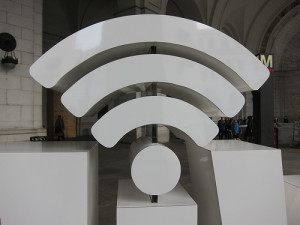Untangling the mysteries of wireless devices
Throughout the year, the Technology Help Desk receives a variety of calls asking about connecting to Elon’s wireless network with a plethora of different devices. Many of these devices are able to connect to the wireless network through a few simple configuration steps. However, some students reach out to the Technology Help Desk about wireless devices (like printers or gaming systems) that won’t connect to the network.
the Technology Help Desk receives a variety of calls asking about connecting to Elon’s wireless network with a plethora of different devices. Many of these devices are able to connect to the wireless network through a few simple configuration steps. However, some students reach out to the Technology Help Desk about wireless devices (like printers or gaming systems) that won’t connect to the network.
Areas of coverage
Elon University provides wireless network connections across campus, including dormitories and classrooms. Additionally, the elonu wireless network is available without configuration at locations near campus including, but not limited to, The Fat Frogg, The Root, Anna Marie’s Pizzeria, and Subway.
Each year, the Technology Help Desk fields calls regarding the strength of university Wi-Fi signals, specifically in dormitory locations. Campus Technology Support makes every effort to ensure strong signals, recently outfitting problematic dormitories with devices to strengthen wireless signals. However, we rely on our students to comply with Campus Technology Support’s network usage policy. It is important students do not utilize their own wireless access points (i.e., wireless routers) because these devices interfere with the university’s wireless network and will slow down speeds for everyone.
Break out the cables…
Unfortunately, there are a variety of devices that are not compatible with Elon University’s wireless network. Our wireless network requires WPA2-Enterprise authentication, which is a fancy way of saying that we use a secure system that requires more information than some devices are capable of providing. For example, wireless Blu-ray players, TiVo, Apple TV, gaming devices like Xbox or Playstation, and wireless printers will not connect to our network. Even though the devices may prompt a password, they do not have the ability to input a user name to complete network authentication. You may still use your wireless printer by breaking out a USB cable and manually connecting it to your computer. For entertainment-based devices, we suggest using an Ethernet cable to connect to the internet.
Connecting is easy
If you have yet to connect to Elon’s wireless network from a compatible device, the process is easy and only takes a few steps. The Help Desk recommends joining the elonu-secure network, since it will allow the network to remember your device and not prompt a login each time you join. Alternatively, the elonu network will prompt you to login with your user name and password upon opening a web browser. Still have problems, questions, or concerns? Contact the Technology Help desk at 278-5200 for more information.
- iDevices – Have an iPhone, iPad, or other iDevice? Configure these devices by opening “Settings,” then Wi-Fi. All you should need is your Elon University email user name and password.
- Windows – If you are trying to configure the wireless network on a PC laptop, you’ll manage the settings through your device’s wireless connection manager. The process may also differ if you are using a wired connection with Windows 7 or Windows 8.
- Mac – If you are using a Mac laptop, you can easily manage your wireless connections through the wireless icon in the top-right of your screen, or by clicking the Apple icon and navigating to System Preferences.
- Android – Due to variations in Android devices, not every Android-based device will work in the same way. Therefore, we cannot guarantee a ‘one-stop shop’ set of instructions. However, Android users may try locating their Android’s Settings functions and access the Wi-Fi Settings for Wireless and network. Make sure that the wireless is on, and locate elonu-secure under the list of Wi-Fi networks. Users should be prompted for their Elon user name and password.
Image by Flickr user John Taylor
 Follow
Follow